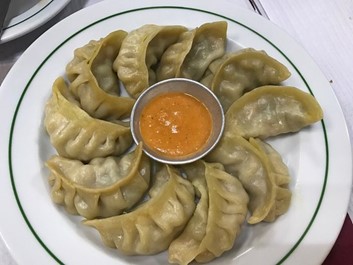
Sherpa Mo.Mo (Meat Dumpling)
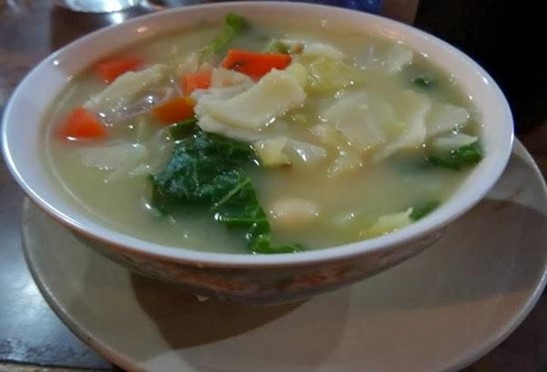
Sherpa Stew
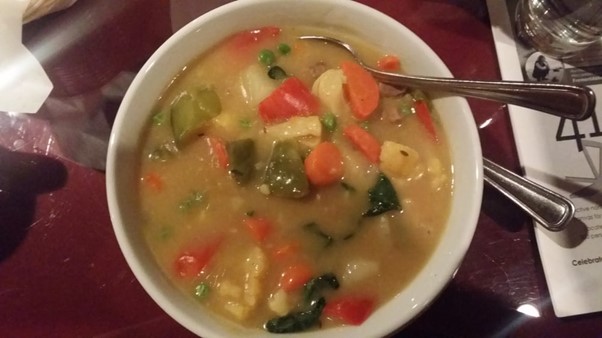
Shyakpa (Sherpa Stew)
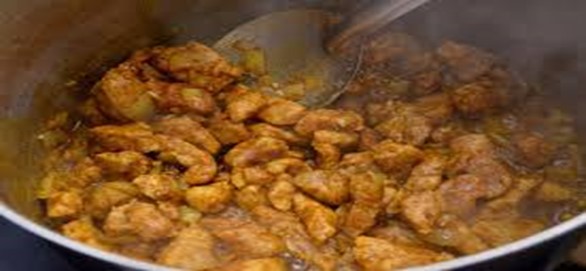
The details I provide of interest for the Nepali foods project from our Sherpa perspective, largely refer to our culinary arts in the Solu-Khumbu districts of the Everest region of Nepal, such as I and other members of the UK Sherpa community were brought up to enjoy and use in our youth. In the UK food options are very different of course because of British/Western culture, modern convenience, and of course on climate, terrain, and availability or non-availability of traditional Sherpa staples of food and drink and ingredients.
Where able, and particularly on our Sherpa people’s special occasions of family importance or our main festivals (these are Losar, Dumje, and Mani Rimdu), of which three are of major importance to us to honour for our own culture even if far from the land and mountains of our birth, we try where able to cook and enjoy some of our Sherpa foods. The warmth of social occasions matter greatly to us, and include particularly for festivals drinking and feasting accompanied by song and – where space permits – dances; this in home and family settings, but also in bigger, community ones: feasting and drinking go together in our culture, rather than separately. In the UK our socialising takes place in our homes with friends and relations often and on special occasions joining, and news being shared on the doings and matters of importance that are taking place with our community here (we have most of our people based here in Ashford in Kent) and in Nepal, the Himalaya.
Some information on Sherpa cuisine and related topics:
Main ingredients in Sherpa foods include potato, radish (important for its heating nature and spiciness), carrots, and butter (ghee) features a lot. Potato is though our staple food, taking the part enjoyed by rice in the lands to the south of our Nepal and of course in Hindustan beyond. Because of our homeland’s extreme climate, food has a special health preserving role, rather than just for nourishment and taste and so has to be filling in a way that fortifies against the cold, which is why the benefits of butter are so great as they help develop necessary fat to insulate; here though there isn’t the same physical health need, so it is not used so much in what we eat compared to in the high mountains, but ghee still features on special occasions to keep touch with the traditions & culture of the land of our birth.
As with our friends the Newars, we also have our own particular utensils for preparing and cooking our foods, and in addition food and drink portage and storage. I am pleased to share names and descriptions of the main cooking and drinking related items with this important project’s audiences in the utensils section of this information resource. In this functional practical topic, in sharing, I and the UK Sherpa people preserve our culture, as here and in the main part of the UK Nepali cultural & and social heritage project share it with our friends the British. Here in Britain we have adopted replacements for some of our cooking utensils, but I feel that this is being just practical; the foods taste just the same though!
Famous recipes:
The most ancient, and/or popular of Sherpa dishes and types of food include, but are not limited too: Potato pancakes (Riki Kur), Sherpa Noodle Soup (very similar to Tibetan noodle soup and Thukpa) known as Shyakpa or Thenthuk , and Sherpa Salted Butter Tea. I have provided a classic recipe for Riki Kur in the main recipes & dishes section of this information resource.
I provide from our Sherpa community a set of images from our food, including Riki Kur, Sherpa Mo-Mo, stew, and some further images including of our homeland. I hope these will be of educational value and interest to all who read this important information resource, and for the project e-booklet on Nepali cuisines.
Traditional Sherpa Potato Pancake — Aloo Roti (Riki Kur):
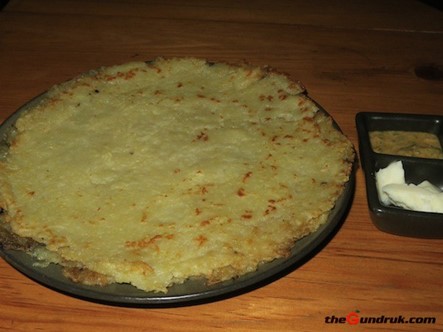
Main ingredients: potato and egg are the main ingredients for this dish. Potatoes are a major source of potassium (higher concentrations than in bananas) and vitamin C; they are cholesterol-free, and fat and sodium free, are carbohydrate-rich, and an excellent source of vitamin C. Eggs are a source of high-quality protein, riboflavin and selenium (mainly egg white), with highest concentrations of nutrients (particularly Vitamin D) found in the yolk.
Taste description & background:
Riki Kur is one of our Sherpa communities main traditional dishes back in Nepal, but we enjoy it here in Britain too, especially when we gather together as a community at our homes. It is filling and gives energy, and is really tasty; great for winter weather in the UK as much as the Himalayan climate. It is a mainstay Sherpa food enjoyed for centuries and its recipe, as with the accompanying Yak cheese & spring onion achar / pickle, which we use with other traditional dishes too; the cheese, chili, and spring onion complement the pancake’s taste, with its blend of potato and butter, itself so well.
I first enjoyed it as a very young child, learning from my mother soon after in the family kitchen. I feel since that time long ago, and settling in the UK, and learning a little about traditional British foods, that there are at least in the Riki Kur itself, some similarities with aspects of Scottish food, and that maybe we can say that terrain and climate do have some influence on the types of food different peoples develop as distinctive to their nutrition needs relating to the lands they live in.
Sana Sherpa
Chair, UK Sherpa Association
October 2019.
